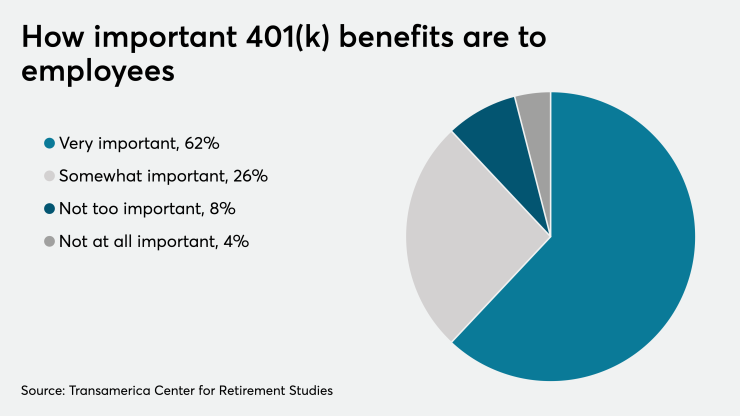As a handful of states roll out employer-mandated retirement-savings programs for their workers, a group of researchers is now advocating for a nationwide policy, arguing that a universal mandate could dramatically boost savings rates and ease the strain on federal assistance programs.
"Today millions of American workers work hard but do not have an easy way to
Read more:
"There's a significant gap in access to workplace retirement plans because employers in the United States are not required to offer a retirement savings plan to their employees, and we know that they are much more likely to save if they have that access — as much as 15 times more likely," Antonelli said.
Her group partnered with Econsult Solutions to explore the potential impact of a nationwide mandate for employers to offer a retirement-savings vehicle using several models with variables around the type of retirement account offered, exemptions for small employers, and whether or not to require employer contributions.
But in any scenario, they concluded that a mandate of some form would be dramatic, increasing the number of Americans saving for retirement by as many as 40 million.
"Really regardless of the model that we're talking about, we really are looking at substantial increases in savings nationally," said Ethan Connor-Ross, senior vice president and principal at Econsult Solutions.
Retirement savings rates have an obvious impact on the quality of life for individual savers, but the researchers also make a public-policy argument in support of a nationwide mandate. With life expectancies on the rise but savings rates falling short, more retirees could come to depend on federal aid programs like Medicaid and food stamps — not a desirable outcome in anyone's estimation.
The Georgetown center reports that some 46% percent of the private-sector workforce — 57.3 million employees — don't have access to a retirement plan through their employer. Meantime, among older workers nearing retirement, 79% of the bottom quintile of earners have no retirement assets, while two-thirds of millennials have little or no savings, according to the center.
Several states have been
Those programs are all new, but state officials say that the early results are positive, with savings rates, particularly among lower-income workers, on the rise. The new report, which does not endorse a specific model, nonetheless imagines participation in retirement plans and savings rates soaring under a nationwide mandate. The researchers estimate that for a young worker who simply goes along with a plan's default contribution rate could retire with as much as $14,320 in annual income after 40 years. If Congress were to establish a refundable saver's tax credit, that figure would spike to $21,300 annually, according to the researchers.
"In the absence of federal action, state-facilitated retirement programs in the past few years have moved forward, and states have been the innovators and leaders," Antonelli said.
"They have recognized the significant fiscal and economic impacts of doing nothing, of an aging population that would retire with insufficient income," she added. "These recent efforts are positive steps for sure, but much more is going to need to be done to significantly close the national access gap."






